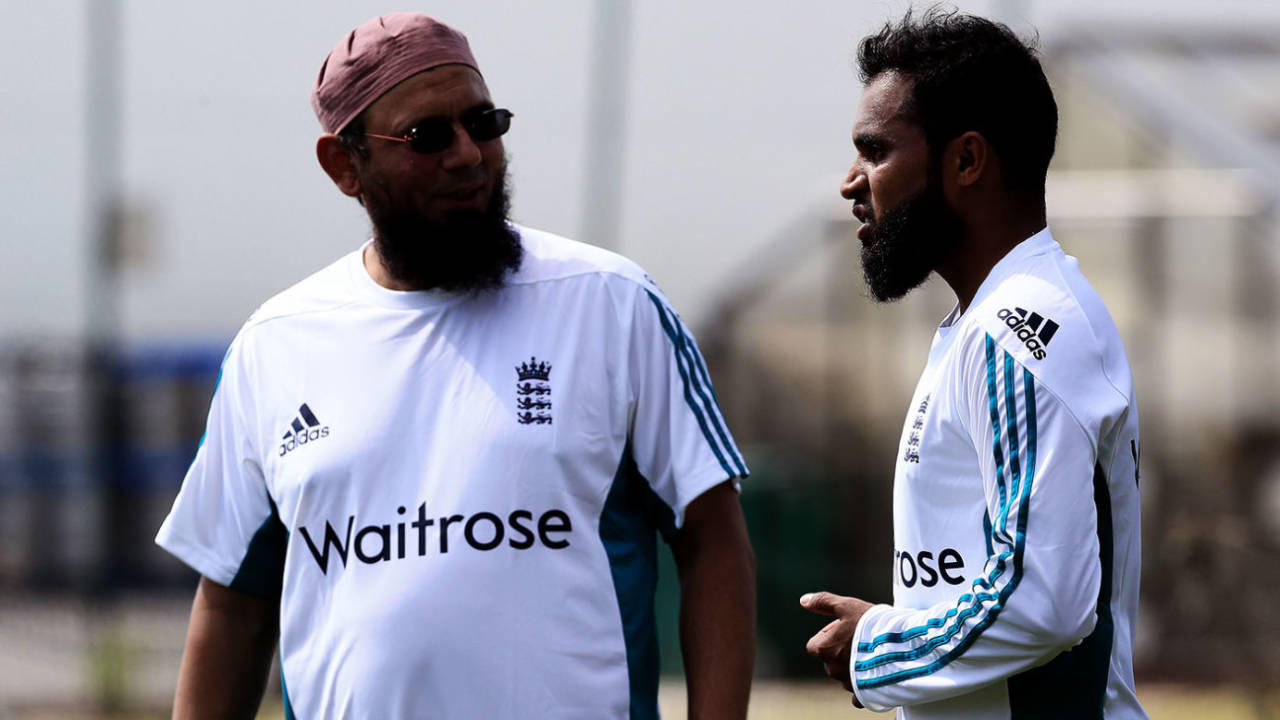How many bowlers have taken four wickets in five balls in an ODI?
Also: what is the highest second-innings score by someone who made a duck in the first innings of a Test?
Saqlain Mushtaq and Adil Rashid have both taken four wickets in five balls, while Lasith Malinga has four in four, in ODIs • Getty Images
The Trinidadian left-arm spinner Raphick Jumadeen scored 84 runs in his 12 Tests. Apart from his 56 against India in Kanpur in 1979, he reached double figures only once in 13 other innings. He might claim to have been cut off just as he was hitting form as that turned out to be his last Test appearance!
I believe there have been only three instances of this in ODIs. Saqlain Mushtaq took four wickets in five balls for Pakistan against Zimbabwe in Peshawar in November 1996, then in February 2019 Adil Rashid claimed four in five for England against West Indies in St George's, Grenada - they came from the last five balls of Rashid's ten-over stint, and he had 1 for 85 before the wickets started tumbling. Chaminda Vaas came close - he took four wickets in the very first over against Bangladesh in Pietermaritzburg in the 2003 World Cup, but punctuated by a four and a wide, so in six balls in all. In the women's game, Dane van Niekerk of South Africa took four in five against West Indies in Basseterre, St Kitts, in January 2013.
There's only one case in Tests of a batsman following a duck with a double-century in the second innings: the South African Dudley Nourse recovered from a blob against Australia in Johannesburg in 1935 by scoring 231 in the second innings. The duck came on Christmas Eve but, after a festive rest day, Nourse scored his first 98 runs on Boxing Day, and helped his side secure their only draw of a series the Australians won 4-0, with the 44-year-old legspinner Clarrie Grimmett taking 44 wickets at 14.59 in what turned out to be his last series.

Malcolm Marshall's 11 for 89, which set up a thumping victory in Trinidad in 1989, actually comes in at 14 on this particular list. On top, with 13 wickets in the Golden Jubilee Test in Bombay (now Mumbai) in 1980, is England's Ian Botham, who also scored a century in between taking 6 for 58 and 7 for 48.
I had thought the answer here would be from some very ancient match in the mid-1800s, but actually the best 11th-wicket stand came (slightly) more recently than that. There have been nine partnerships of 50 or more for the 11th wicket, the highest being 89 by the Nawab of Pataudi senior and slow left-armer Phiroze Palia, for India against the Rest of India in Lahore (then part of India) in 1932.
"In the Oval Test of 2006, Pakistan had a first-innings lead of 331, but England won when Pakistan (in)famously forfeited the match." And others have pointed out that, technically speaking, England overturned a first-innings deficit of 248 to win the equally infamous Centurion Test against South Africa in 1999-2000.
Steven Lynch is the editor of the updated edition of Wisden on the Ashes
